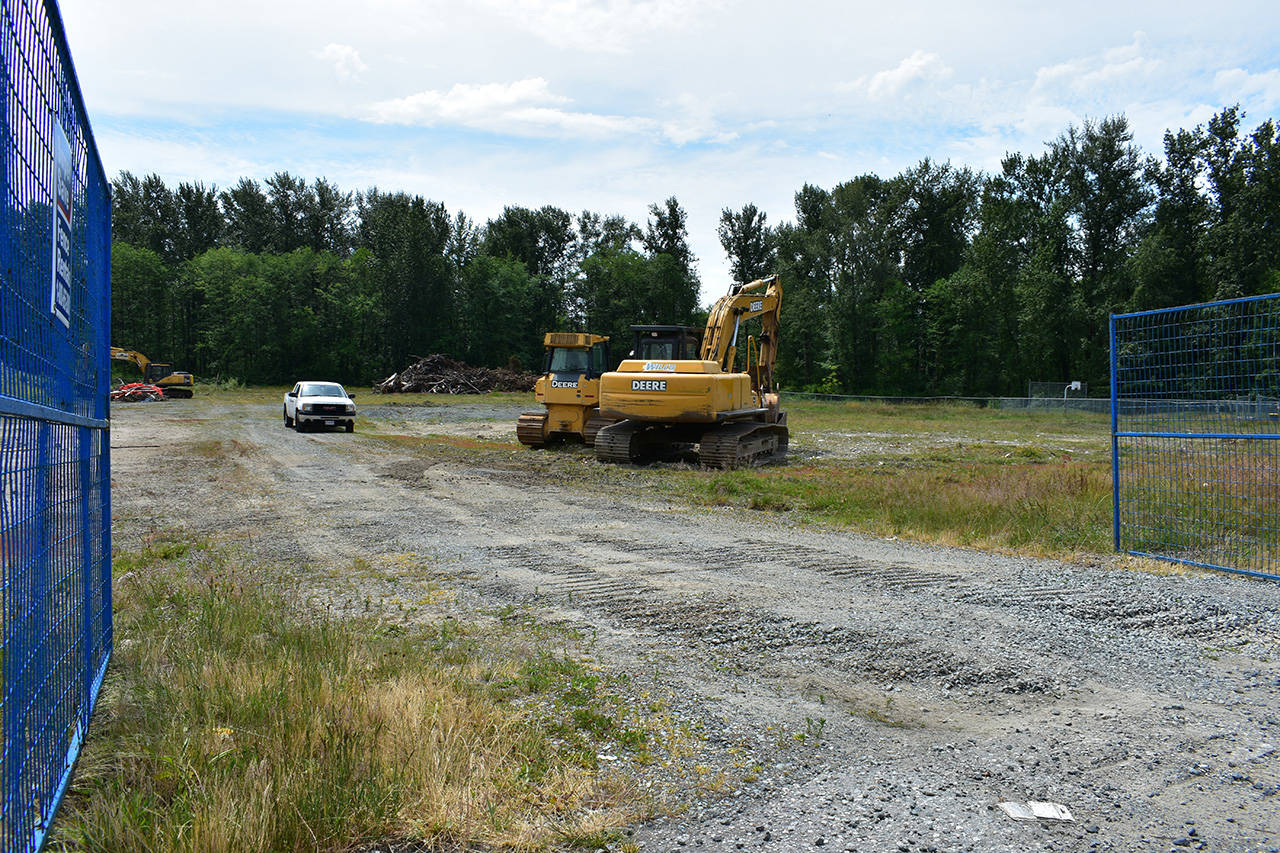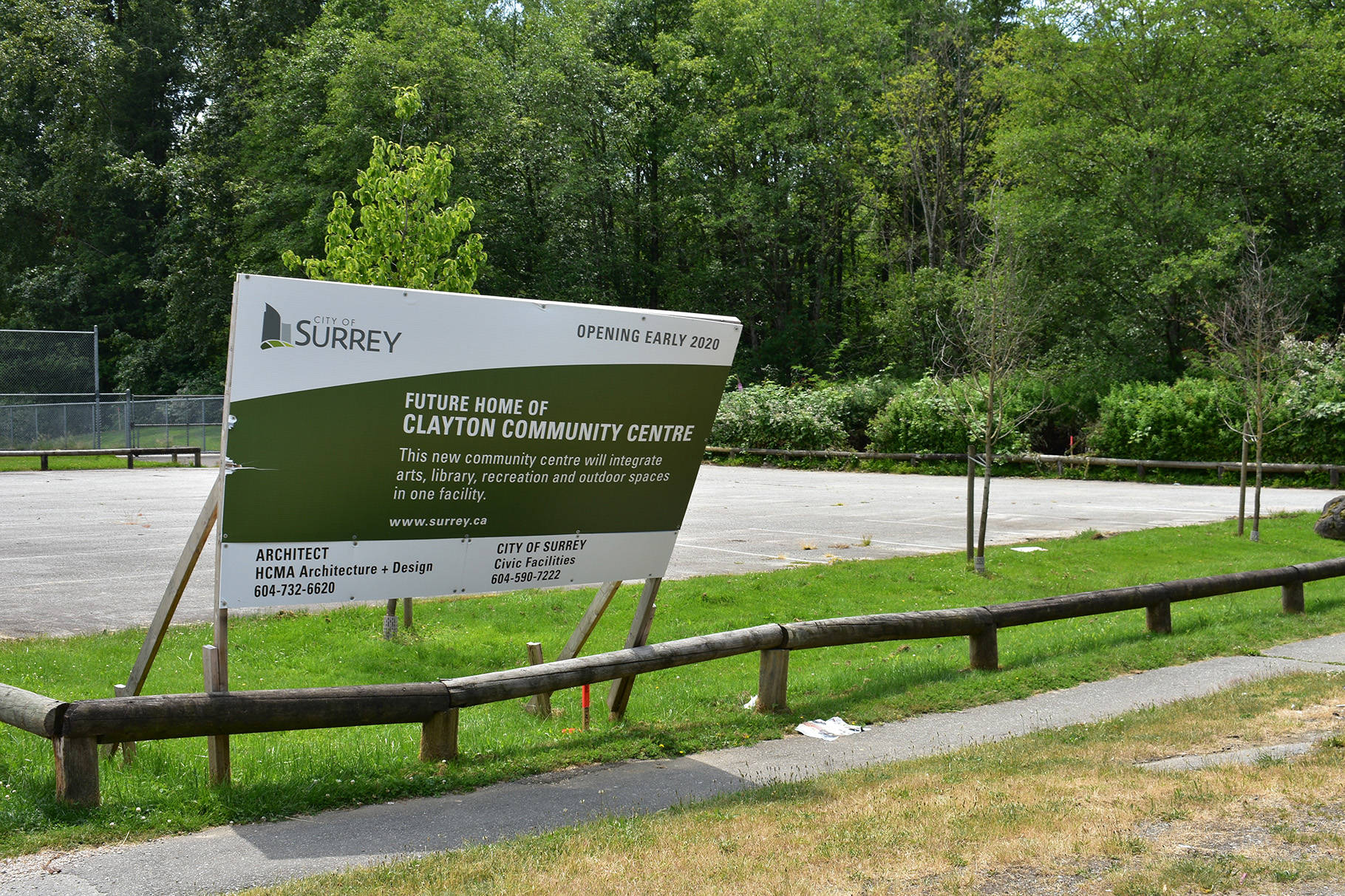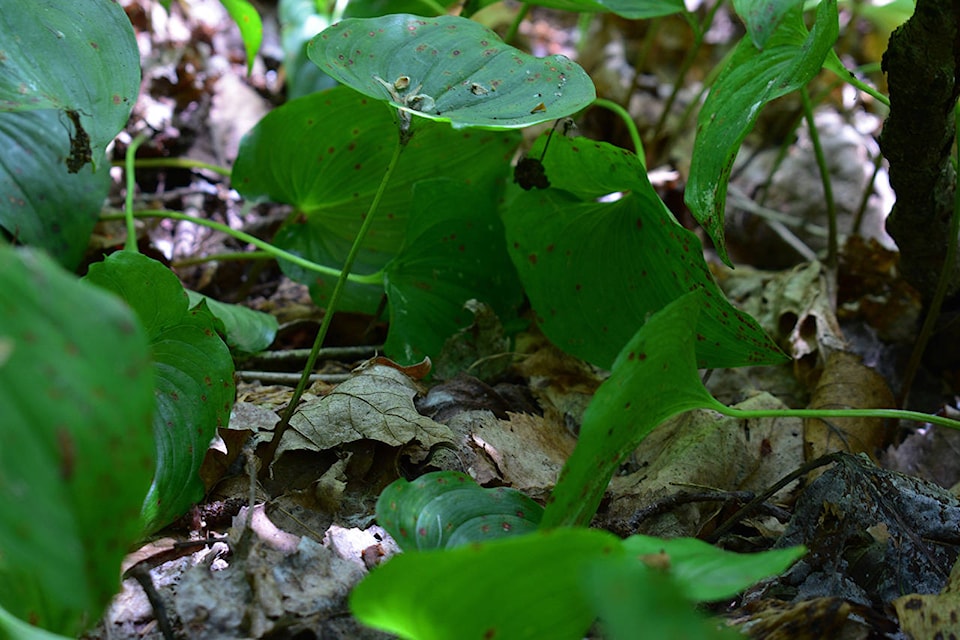In Clayton Park’s forest, the air is still.
Mosquitoes whine in the June heat, and salmonberries hang heavy on their branches. The trunks of Sitka spruce and cottonwood reach up past the ferns on the forest floor. Dappled light falls on the brown trail of dead leaves marking the former path of a small stream.
It’s dry now, but in the winter the water fills its banks and spreads throughout the forest, creating cool, wet alcoves beneath the trees.
It would be the perfect habitat for a red-legged frog — if only there were any red-legged frogs around.
Red-legged frogs on the blue list
Northern red-legged frogs, or Rana aurora aurora, are a species of frog that range from the coastal mountains to Haida Gwaii, including Vancouver Island.
| The Northern red-legged frog can be found from California to Haida Gwaii, and is best adapted to cool, forested regions. Born1945/Flickr photo |
Similar in appearance to the Oregon spotted frog, they are distinguishable by their vivid red undersides — some people say it is as though their skin is translucent, and you are looking through it to the red muscle beneath.
Red-legged frogs are long-lived, likely because of their relatively slow growth and cool habitats. They reach sexual maturity at age three or four and can travel a kilometre from their forested summer habitats to ponds in the wetland regions. They breed in late winter and early spring, and are often only at the breeding sites for a few weeks at a time.
For SFU PhD candidate Dan Greenberg, who studies amphibian evolution and conservation, concern about red-legged frogs is increasing.
A provincial blue-listed species and a species of special concern to the Committee on the Status of Endangered Wildlife in Canada (COSEWIC), red-legged frogs are considered a vulnerable species. While not officially threatened, endangered or extinct, their habitat is at risk through infrastructure development and urbanization, while a need for cool, wet climates keeps them tied to specific areas.
“That’s the concern with them, right,” Greenberg explained. “That they are going to be the future threatened and endangered species.”
Making space for nature
While the forest inside Clayton Park feels secluded, a flurry of activity is about to take place outside.
Clayton Park borders on 18608 72 Ave, soon to be the home of the Clayton Community Centre. In mid-June the lot was empty except for two excavators and some debris, but by the summer of 2020 it will be the home to a $43.5-million facility, including a community centre, a Great Lawn and a community garden.
RELATED: Surrey breaks ground on $43M Clayton Community Centre
“We’re really proud of what this project’s going to do,” Scott Groves, project manager for the Clayton Community Centre, said. “Because it’s the arts and the recreation and the library and the outdoor parks teams all working really closely together, more closely together than we’ve ever done before — for a building anyway.”
Groves was standing by the edge of the forest on the community centre property as he spoke.
A former salmon enhancement engineer who looks as though he would be more at home in a Tilley hat than a dress shirt, Groves was on site to walk down the fence line of the construction project, and make sure it was far enough away from the stream edge.
The riparian zone, the area around the banks of a waterway, is an important part of the natural habitat the project intends to improve, not only for nutrients that make their way down to the Serpentine River but also for local amphibians.
Enhancing the riparian zone
Scott Groves hasn’t seen a red-legged frog in Clayton Park. Nor has Neal Avens, the manager of parks for the City of Surrey. And neither did Jimmy Allen, Theraesa Cole and Mike Coulthard, biologists who co-authored an environmental report for the future community centre.
But in spite of that, the plans for the Clayton Community Centre include a pond specifically for red-legged frogs and their tadpoles.
“This is theoretically suitable habitat,” Avens said. “The idea is that (by) enhancing the natural habitat adjacent to the stream and providing the wetted pond, we create the opportunity for red-legged frog to move into the area.”
“Sometimes you might have just a few that have been able to just barely survive,” Groves added. “Then you bring that habitat level up to a higher quality and then they can reproduce and create better populations.”
The pond Avens mentioned is actually one of two stormwater detention ponds, playing double duty as an infrastructure development and a natural enhancement.
Detention ponds are used to reduce the flow of water coming off man-made structures. Instead of moving directly into streams, and possibly causing erosion on the banks, it flows into designated holding areas and slowly drains through a small pipe.
In the case of the future red-legged frog pond, it will always have about half a metre of water in it (more when it rains) and be designed to become a natural part of the riparian zone. The hope is that by introducing a permanent body of standing water, complete with native plant species and protected hiding spaces for tiny tadpoles, red-legged frogs will come to the park to breed.
Will it work?
Sometime in the future, Clayton Community Centre patrons could be hearing the stuttering calls of the red-legged frog coming from the pond. But there are challenges to getting there.
“When you look at the landscape, there’s roads that they are going to potentially have to deal with,” Greenberg said. The area around the Clayton community centre is largely farms, but increasing development and traffic could make it more difficult for the frogs to travel.
“That’s probably going to be a major issue, at least in this area, is the bisection of their different habitat elements with all the human activity going around,” Greenberg said.
But, when it comes to vulnerable species, the more habitat the better. And even better if they are able to find it.
Greenberg thinks they will. Many amphibians have an as-yet unexplained ability to find new water sources when they become available.
“When you introduce these new landscape elements … if the frogs are there they will eventually find it,” Greenberg said. “It might not necessarily be immediately, it might not necessarily be a year. But eventually they tend to seek it out.
“This is what is found time and time again,” he continued. “Build it and they will come.”


